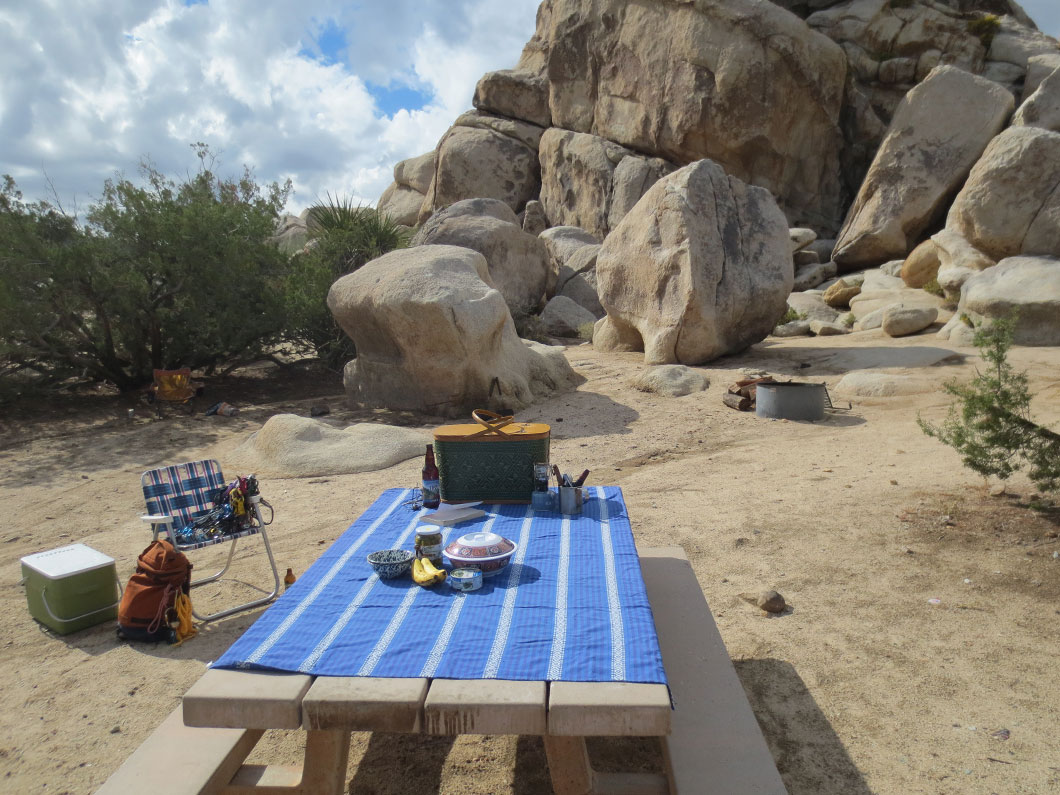
We’ll be teaching several outdoor cooking classes at the Outessa Summit in Tahoe and Powder Mountain this summer. If you’re a woman with an adventurous spirit, you should take this unique chance to get to the woods with other incredible women and have an amazing time! Many of our favorite outdoor brands will be meeting us at Outessa to teach you how to climb, backpack, paddleboard, and beyond. One of those brands is Smarty Pants Vitamins, who will help you stay energized and nutritionally fulfilled on the trail. We get the question of nutrition a lot, so we’re excited to share this article by Grace from Smarty Pants, which breaks down the health benefits of some of the most common trail foods. Thanks Grace!

There are so many things to enjoy about the great outdoors – the wildlife, the fresh air, how amazing the night sky looks when there’s no light for miles around. Oh, and the food. Obviously. One of the best things about a camping trip or hiking excursion are the delicious snacks, treats, and cook-ups you get to enjoy along the trail or at the end of a wilderness-packed day. While there are a few campfire classics that aren’t exactly the pinnacle of “healthy” cuisine (cough, smores, cough, beer) we’d never say not to treat yo’ self. But there are tons of camp-friendly options you can throw in the mix that not only taste good, but will keep you feeling good (so you have the energy to enjoy all those birds, stars, and #elevationgains).

Here are our picks for the five healthiest foods to take camping or hiking.
Baked Potatoes
Potatoes sometimes get a bad rap, but we’re not entirely sure why. The inside is a great source of soluble fiber, which helps feed our good gut bacteria, while the skin contains 5 grams of insoluble fiber, which helps keep things “moving along.” One whole baked potato has 7 grams of protein, 46 percent of the recommended daily intake of vitamin B6, 48 percent of vitamin C, 46 percent of potassium, 21 percent of phosphorous and magnesium, and 33 percent of manganese. B6 helps to produce serotonin, a neurotransmitter that regulates mood, sleep, and appetite. Magnesium – a nutrient that’s pretty difficult to get from most foods – can help muscles relax, improve sleep, and reduce stress. Vitamin C is an antioxidant that supports your adrenal glands, which is very important after long days of hiking and strenuous outdoor activities. But perhaps the best part about the potato is how incredibly easy they are to pack and cook. They require no refrigeration, just throw them in your bag. When you’re ready to eat, poke some holes into the skin with a fork, wrap in tin foil, and place on a hot bed of coals or on a rock next to a low fire. They’ll be ready in about half an hour. We recommend slathering with grass-fed butter and sea salt.
Trail Mix
This one might come as no surprise, but have you ever thought about why this snack is so popular amongst trail trekkers? It tastes amazing, true, but, both nutritionally and logistically, trail mix is exactly what you need when heading out into the wild blue yonder. One cup of trail mix can contain anywhere from 500-700 calories, which, in many situations, is not ideal, but when you’re on the trail all day you need a dense source of fuel that’s not going to weigh down your pack or your body. Contained in those calories is more than 20 grams of protein, 40 grams of (healthy) fats, 60 grams of carbs, and nearly a third of your daily value for 14 different vitamins and minerals. Meanwhile, the salt from the nuts and the glucose from the dried fruits help replenish electrolytes and keep you hydrated.
To ensure you get the healthiest mix, go for kinds that include just fruit and nuts. Salted nuts are good, but make sure the fruit doesn’t come coated in extra sugar. We like mixes that include a majority of nuts such as almonds and macadamia nuts (rather than peanuts), dried bananas for potassium, pumpkin seeds for zinc, and dried blueberries for their low sugar and high antioxidant content.
Canned Fish
If you’re thinking “Ew, gross,” you can skip this one, but, before you go, you might be interested to know that canned fish is, hands down, one of the healthiest, most affordable, convenient, camp-friendly foods on the face of the planet. Wild-caught sardines have more calcium and phosphorous than milk, more iron than spinach, more potassium than coconut water, and as much protein as steak. Plus, they pack over 300 mg of omega 3 EPA and 650 mg of omega 3 DHA. If you’re not into sardines (you should try them, they taste just like tuna, we swear!) Try wild-caught salmon. We recommend opting for varieties that include the skin and bones. You can’t taste them, and these are the parts that contain the majority of the vitamins and minerals. Our favorite brands are Wild Plant and Trader Joe’s BPA-free options.
Chili
Chili is the definition of maximum return, minimum investment. Everything you’d want or need to put in chili you can find in a can, it can be modified to suit almost any taste and dietary preference, and it’s incredibly nutrient dense. A simple vegetarian chili made out of beans, veggies, and tomato paste contains 10 grams of protein, a whopping 16 grams of fiber, and only 4 grams of sugar. In addition, you’re also getting a sizeable serving of lycopene – the antioxidant that gives tomatoes their red color and is in our new SmartyPants Men’s Complete. Unlike many antioxidants that are destroyed by heat, lycopene content is actually enhanced by cooking. Add in some grass-fed beef or bison meat for extra protein, vitamin A, iron, and a hefty dose of B vitamins, which will keep you energized on the trail.
Jerky
For camping and hiking aficionados, jerky may be old news – dried meats have been a staple of outdoorsmen (and women) for hundreds of years, as they’re an almost perfect balance between fat and protein, a good source of B vitamins, and zinc. The good news is, jerky is so popular now you can find it almost anywhere, from Whole Foods to the airport gift shop. But all jerkies are not created equal. We recommend opting for brands that are 100% grass-fed – an important thing to look for when buying animal products, as grass-fed products are often more sustainable, raised in a more humane manner, and have been shown to have higher levels of conjugated linoleic acid (CLA) and omega 3 fatty acids.

Grace is a certified Nutritional Therapy Practitioner (NTP) and a graduate of Duke University. She received her nutrition certification from the Nutritional Therapy Association, and her training is based on the work of Dr. Weston A Price, as well as the latest peer-reviewed, scientific research. In addition to managing all things on the SmartyPants blog, Grace has been featured as a regular contributor for Refinery29 Wellness. Grace continues to work with clients as a private nutritional coach, “The Primal Blonde”. You can read more of Grace’s nutrition knowhow, and find out how you can work with her one-on-one, at www.primalblondenutrition.com. To check out what kind of kale-infused, bone broth concoction she’s cooking up, or her latest adventure in the world of fitness, follow Grace on Instagram @theprimalblonde.
